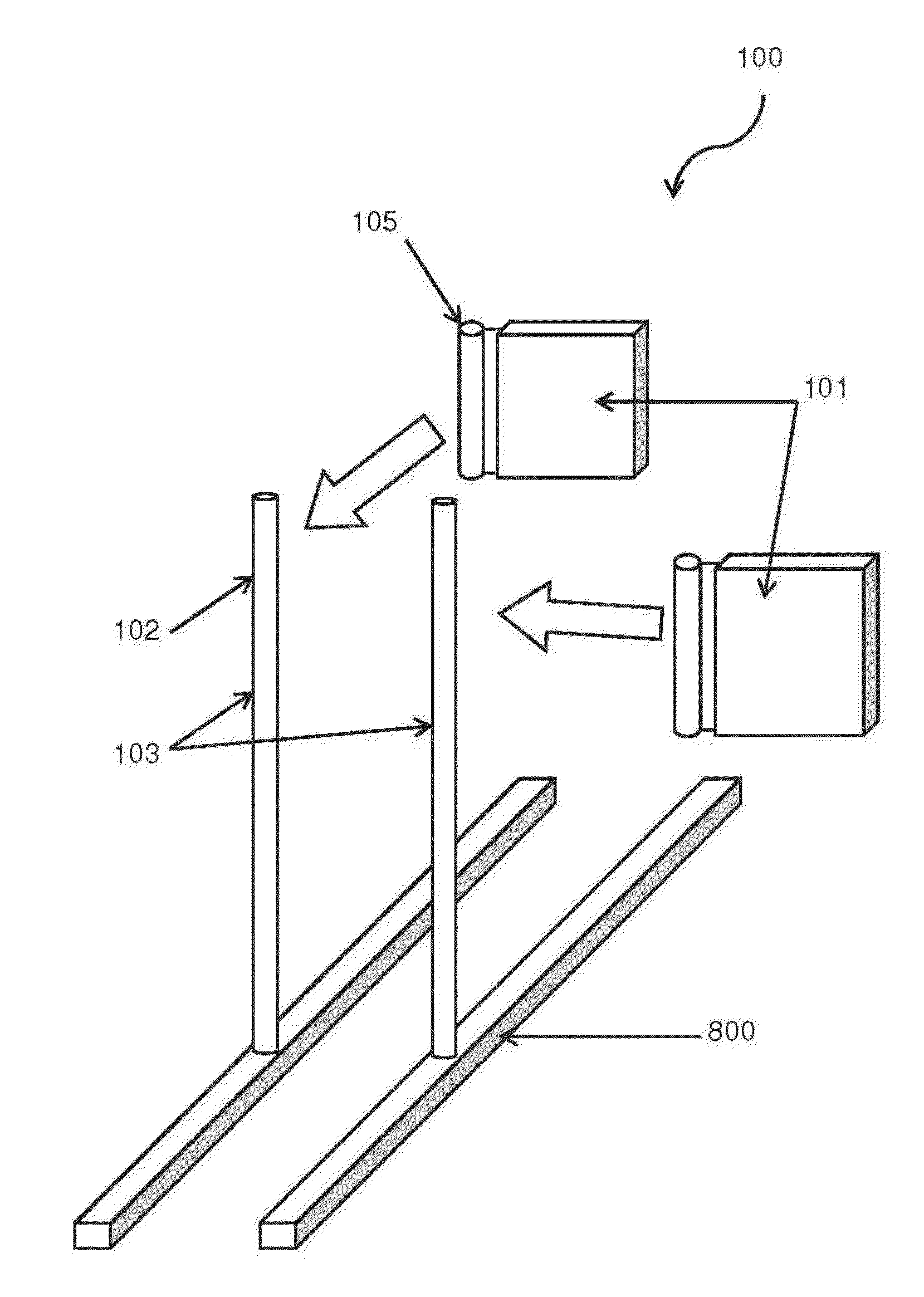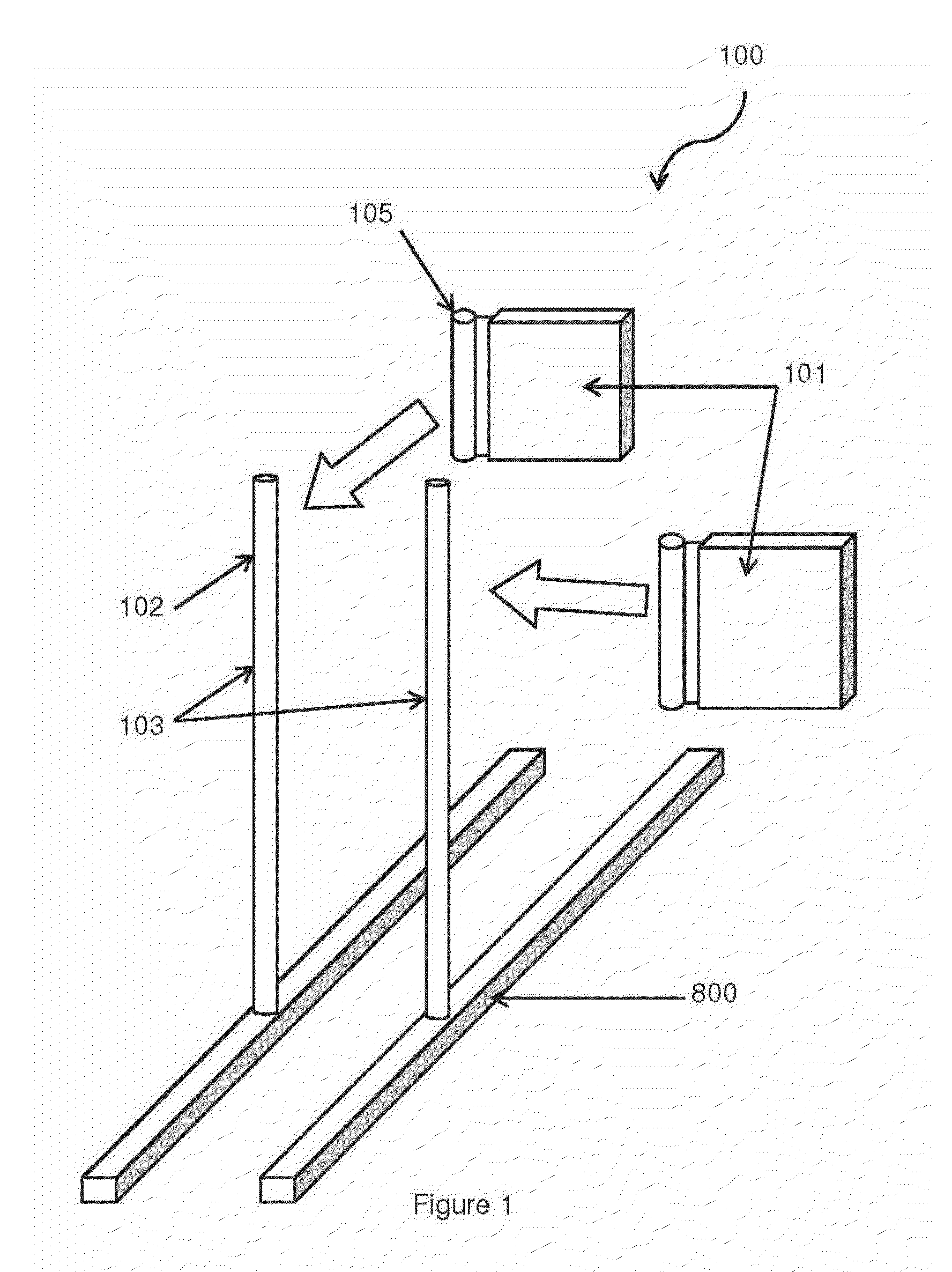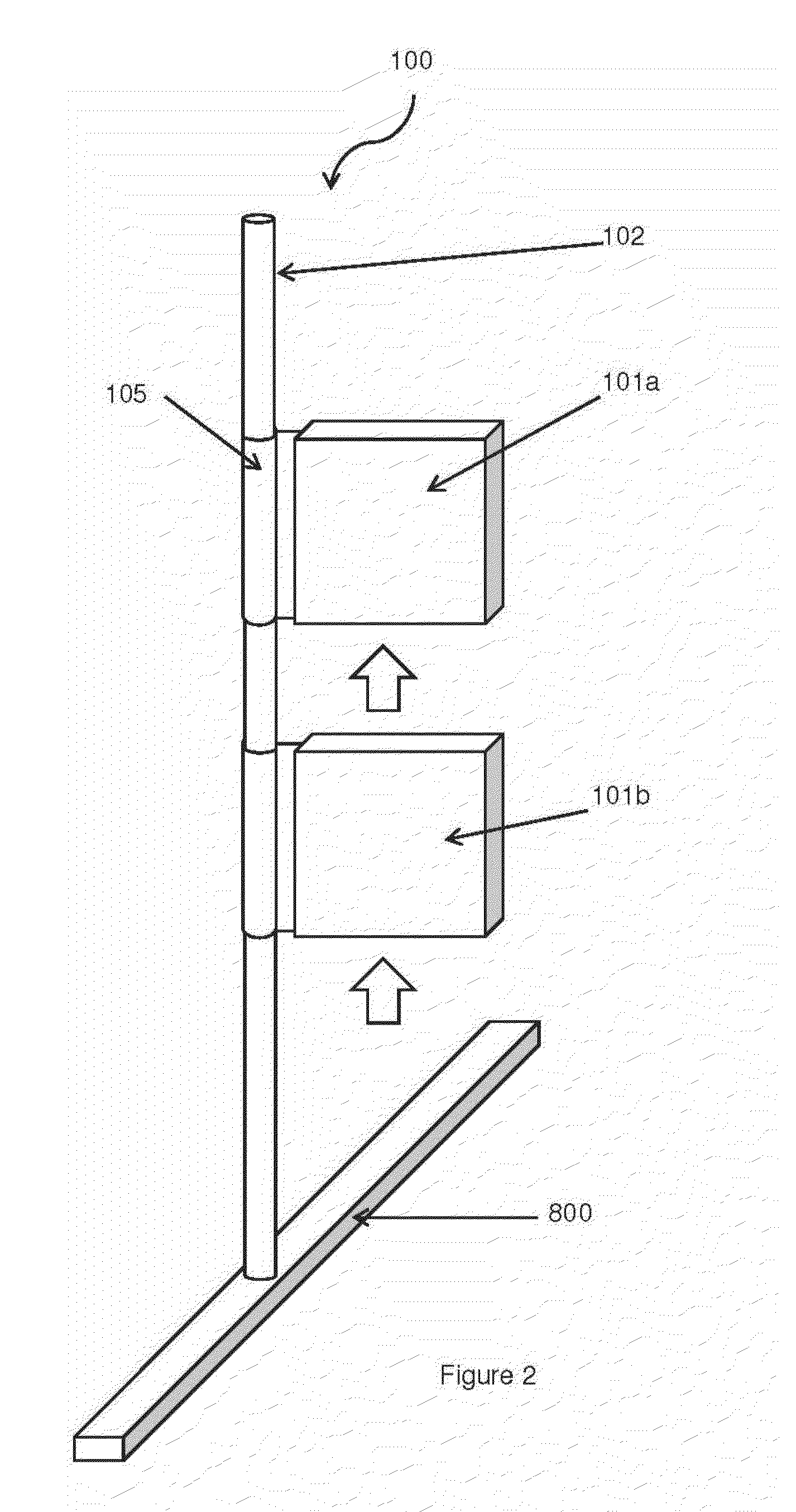Noise Barrier And A Method Of Construction Thereof
a technology of noise barrier and construction method, which is applied in the field of noise barrier, can solve the problems of high wind load on such noise barrier structures, energy and laborious erection and mobilization of such heavy noise barrier structures, and energy and laborious dismantling of such heavy structures, so as to achieve simple construction of noise barrier, relieve the need for cranes, and reduce the effect of noise barrier
- Summary
- Abstract
- Description
- Claims
- Application Information
AI Technical Summary
Benefits of technology
Problems solved by technology
Method used
Image
Examples
first embodiment
[0049]FIG. 1 is a schematic of an exploded view of a first embodiment, which is a noise barrier 100 having noise barrier panels 101 that can be blown open by wind. This limits the wind load on the noise barrier 100, mounting poles 102 and frame 103, as any instance of undesirably high wind bad is reduced immediately when noise barrier panels 101 are blown open to reduce the noise barrier surface area facing the wind.
[0050]The term ‘wind load’ refers to the pressure or force induced on a structure by wind, and is one of the most critical parameters in outdoor noise barrier design. Wind load is approximately directly proportional to the cross-sectional area of a surface orthogonal to wind direction and square of the wind speed:
F=1 / 2ρV2ACd (1)
[0051]Where:
[0052]ρ=Density of air V=Wind speed
[0053]A=Cross sectional area orthogonal to wind speed
[0054]Cd=Coefficient of drag F=Force of wind load
[0055]In some embodiments, the reduction of orthogonal surface area possibly reduces the wind loa...
second embodiment
[0088]FIG. 20 show a second embodiment which is a noise barrier 100. The noise barrier 100 has two main parts, namely, flexible noise barrier panels 101 and a frame 103 for mounting the noise barrier panels 101 thereon. The frame 103 provides standing support for noise barrier panels 101 and is made up of a pair of mounting poles 102 erected vertically on the ground.
[0089]The frame 103 is provided with a rail system 2000 for installation of noise barrier panels 101. The rail system 2000 is pivoted to the top of each mounting pole 102. Each rail 2000 is almost as long as the mounting pole 102. The black block arrow in FIG. 20 also illustrates how the lower end of the rail system 2000 can be pulled away from the leg of the mounting pole 102, so that the rail system 2000 is slanted at an angle to the frame 103.
[0090]FIG. 21 shows a noise barrier panel 101 for insertion into the rail system 2000. The noise barrier panel 101 provides a large surface area 1901 for insulating sound. The to...
PUM
| Property | Measurement | Unit |
|---|---|---|
| wind force | aaaaa | aaaaa |
| force | aaaaa | aaaaa |
| magnetic | aaaaa | aaaaa |
Abstract
Description
Claims
Application Information
 Login to View More
Login to View More - R&D
- Intellectual Property
- Life Sciences
- Materials
- Tech Scout
- Unparalleled Data Quality
- Higher Quality Content
- 60% Fewer Hallucinations
Browse by: Latest US Patents, China's latest patents, Technical Efficacy Thesaurus, Application Domain, Technology Topic, Popular Technical Reports.
© 2025 PatSnap. All rights reserved.Legal|Privacy policy|Modern Slavery Act Transparency Statement|Sitemap|About US| Contact US: help@patsnap.com



